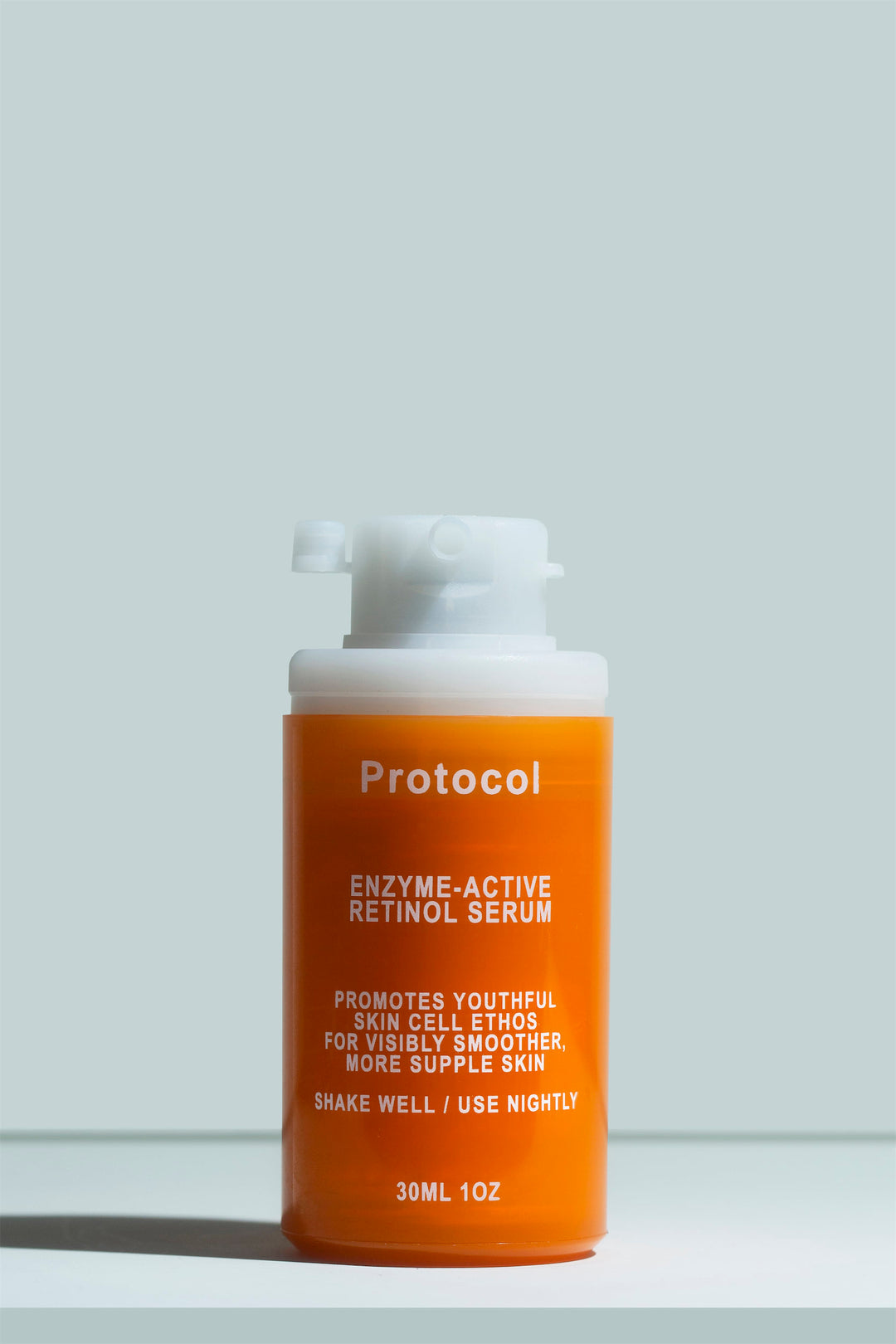How to Fix Dehydrated Skin: 9 Key Tips

Dealing with skin dehydration is always unpleasant. Your skin feels tight and uncomfortable, as though it doesn’t fit you correctly. Every wrinkle seems exaggerated, and you might also have visible flakiness or redness.
So how do you fix dehydrated skin? As you’ll soon discover, it’s not too complicated - you don’t need expensive hyaluronic acid serums or odd-looking masks.
In this guide, we’ll start with the ultimate method to fixing dehydrated skin quickly, which we call the “soak and seal” method. Then, we’ll move on to the important skincare habits that’ll help you prevent dehydration in the long term, to keep your skin feeling glowy, nourished, and happy.
1. Soak and seal: THE ULTIMATE METHOD
Nothing beats the “soak and seal” method when it comes to treating dehydrated skin. By soaking the skin and then sealing the water inside, this technique actively fixes dehydration and reverses transepidermal water loss quickly.
How it works is pretty straightforward as well. Just a few minutes of saturation are enough for water to penetrate past your stratum corneum, which allows the skin to become hydrated… For a few minutes, max.
Before the water has a chance to escape, it’s important to apply an occlusive, which is an ingredient that will act as a barrier and prevent water from evaporating.
The simplest way to go about this is by moisturizing immediately after a shower or bath, ideally using a product with a high percentage of occlusives, like a thick petrolatum-based ointment or even pure Vaseline.
(We explain occlusives in more detail in our breakdown of moisturizer ingredients).
Unfortunately, most occlusives feel heavy and greasy on the skin. If you’d prefer a nicer occlusive, our Water Lock is perfection - it’s made with a combination of silicones that create a beautiful barrier over the skin but feel silky-smooth and light.
If your skin is showing signs of dehydration, it’s important to follow this method at least once a day. Instead of showering, you can also repeatedly splash your face with water or apply several layers of a hydrating mist before applying your occlusive.
2. Moisturize regularly
A daily moisturizer is the best way to keep dehydration at bay. Quality moisturizers hydrate the skin with a blend of water, humectants (ingredients that attract water), and occlusives that slow down transepidermal water loss.
An effective moisturizer will counter both the external and internal factors that can lead to dehydration, such as over-cleansing or the natural underproduction of skin lipids.
It’s important to choose a moisturizer that contains humectants such as glycerin or hyaluronic acid, occlusives such as dimethicone or petrolatum, and, of course, water. In the long term, it can also be useful to introduce ingredients that mimic or reinforce the skin’s intracellular lipids, such as squalane, ceramides, niacinamide, fatty acids, and cholesterol.
3. Choose a gentle cleanser
The type of cleanser you use to wash your face, body, and even your dishes can seriously impact your skin’s hydration levels. Choose gentle face and body washes that don’t leave your skin totally stripped of all lipids.
Formulas that contain blends of surfactants or that are reinforced with moisturizing ingredients are often more gentle. You may also find that gel or foam cleansers that don’t produce a lot of bubbles are a great choice.
4. Cleanse less
Consider whether you’re cleansing your skin more than necessary. When your skin is dehydrated, washing less gives your skin more time to recover its natural barrier functions.
We’re frequently told that cleansing twice a day is essential for skin health, but that’s not necessarily true. Unless your skin is extremely oily, washing once a day in the evening is usually ideal. If your skin is seriously dry, sensitive, or compromised, even washing every other day might be enough.
5. Consider gentle chemical exfoliation
Over time, dehydration impedes the skin’s ability to shed dead skin cells. This leads to a rough, thick, flakey layer of dead skin at the surface that blocks moisturizers from penetrating.
Gentle chemical exfoliation can help eliminate that layer of dead skin without irritating or damaging the underlying layers (which is something we, unfortunately, can’t say for physical scrubs).
Choose an exfoliant with alpha-hydroxy acids (AHAs) like glycolic and lactic acid. AHAs are intelligent exfoliants that force dead skin buildup to shed on its own in a gentle, even manner, and they also double as moisture binders.
That said, it’s imperative to avoid exfoliation if your skin is very irritated or compromised with signs of sensitivity like redness, pain, or patchy spots of inflammation.
6. Opt for quick, cool showers
We already touched on how cleansing can dehydrate the skin, but ironically, water alone can also be a culprit. Submersion in water for several minutes may temporarily saturate the skin with water, but it also weakens the skin barrier, leading to higher levels of TEWL. The level of dehydration becomes even higher if you submerge your skin in hot water for long periods of time.
When your skin is already showing signs of dehydration, it’s very important to take shorter, cooler showers, and to avoid washing your hands in hot water. Finally, when you do finish cleansing, moisturize with an occlusive cream immediately in order to slow down water evaporation.
7. Don’t forget sunscreen
Sun exposure is the ultimate skin-destroyer, causing any number of issues. We usually focus on how UVA and UVA rays can lead to premature aging or skin cancer, but skipping sunscreen can also dehydrate your skin.
Make applying sunscreen a regular part of your morning routine, especially on days when the UV index is high. Make sure to use at least a ¼ teaspoon. Choose sunscreens rich in moisturizing ingredients for an added dose of hydration.
8. Use barrier-repairing products
For countering chronic dehydration or a compromised skin barrier, don’t just look for temporary solutions like humectants and occlusives. Look for moisturizing ingredients like niacinamide, ceramides, and fatty acids. These ingredients bolster the skin’s natural barrier functions by mimicking its natural lipids or by bolstering the skin’s own production of beneficial barrier components.
9. Hydrating toners or serums
At Protocol, we don’t believe hydrating serums or toners are essential, even when the skin is dehydrated. The reality is that the best way to fix dehydration is by saturating the skin with water and then sealing it in with occlusives. Additional humectants don’t hurt, but they’re not must-haves.
That said, they can be a useful add-on, especially when you need to boost the hydration levels of your skincare routine but don’t have time for the full “saturate and seal” process.
Hydration station
Fixing skin dehydration is a simple matter of introducing water back into your skin, and then locking it in. When your skin dehydration is bad, you may need to repeat the soak and seal method for several days in a row, or even make it a regular habit if you live in a very dry climate.
This method has been our ride-or-die for years, but it hasn’t always been pleasant. The most common and effective occlusives are, unfortunately, also greasy and heavy.
We developed Water Lock because we wanted to effectively hydrate our skin with a product that wouldn’t feel quite so heavy.
Made with interlinking chains of multiple lightweight occlusives, Water Lock binds water to the skin while imparting a demi-matte, silky feel that works for all skin types. If you’d like to treat your skin dehydration like a skintellectual, make sure to try it for yourself!




